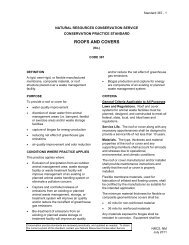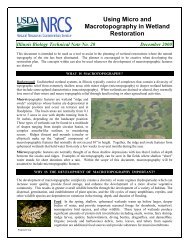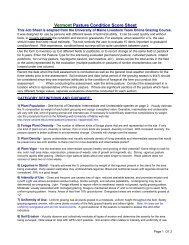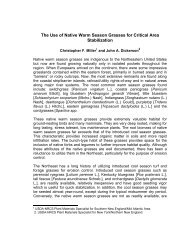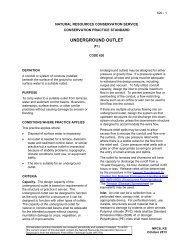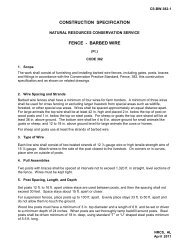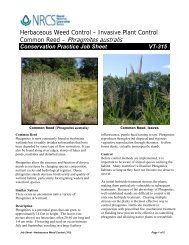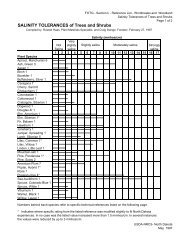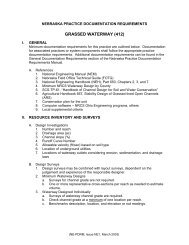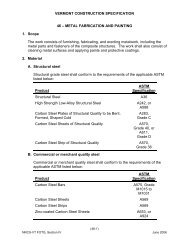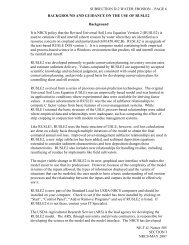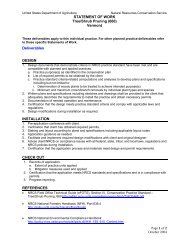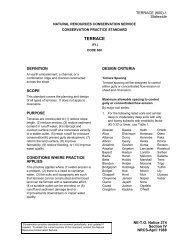technical notes - Field Office Technical Guide - US Department of ...
technical notes - Field Office Technical Guide - US Department of ...
technical notes - Field Office Technical Guide - US Department of ...
You also want an ePaper? Increase the reach of your titles
YUMPU automatically turns print PDFs into web optimized ePapers that Google loves.
3<br />
1. One unit is needed for COM or Cox rotations.<br />
(x = small grain with green manure)<br />
2. Two units for four year rotations <strong>of</strong> COMM or CCOM.<br />
3. Three units for six year rotations <strong>of</strong> CCOMM or CCCOMM.<br />
NRCS, Iowa<br />
November 2007<br />
Note: A direct seeding may replace the 0 year.<br />
Other Rotations:<br />
1. CCOMM rotation takes two approximately equal sized units for stripcropping<br />
and one field approximately one half the size <strong>of</strong> the units to be contour farmed<br />
with adequate conservation tillage and/or terraces as additional protection to<br />
compensate for reduced “P” values for contour strips versus contouring alone.<br />
2. CCCOMMM rotation takes three units plus one field one half the size <strong>of</strong> the<br />
stripped units to balance the acreages in the crop rotation.<br />
When preparing detailed planning, the unit method <strong>of</strong> planning simplifies the number<br />
<strong>of</strong> fields, and the arrangement <strong>of</strong> alternate strips within the unit are lettered in a series<br />
as (a) and (b) or (a), (b), and (c).<br />
EXAMPLE: Contour Stripcropping Lettering System<br />
*Unit III.<br />
Why show planned or applied strip locations?<br />
A. Some farmers will want to see approximately how strips will lay out before they<br />
make their decision in planning.



